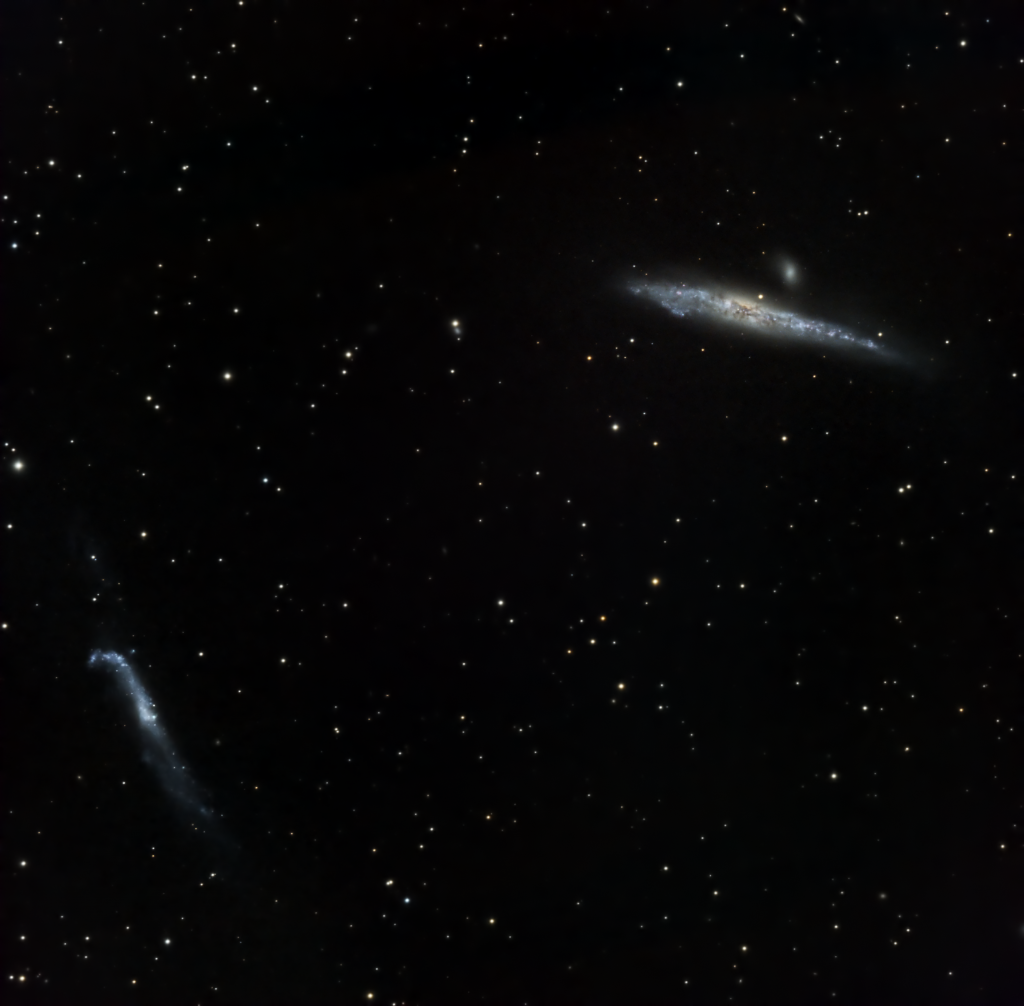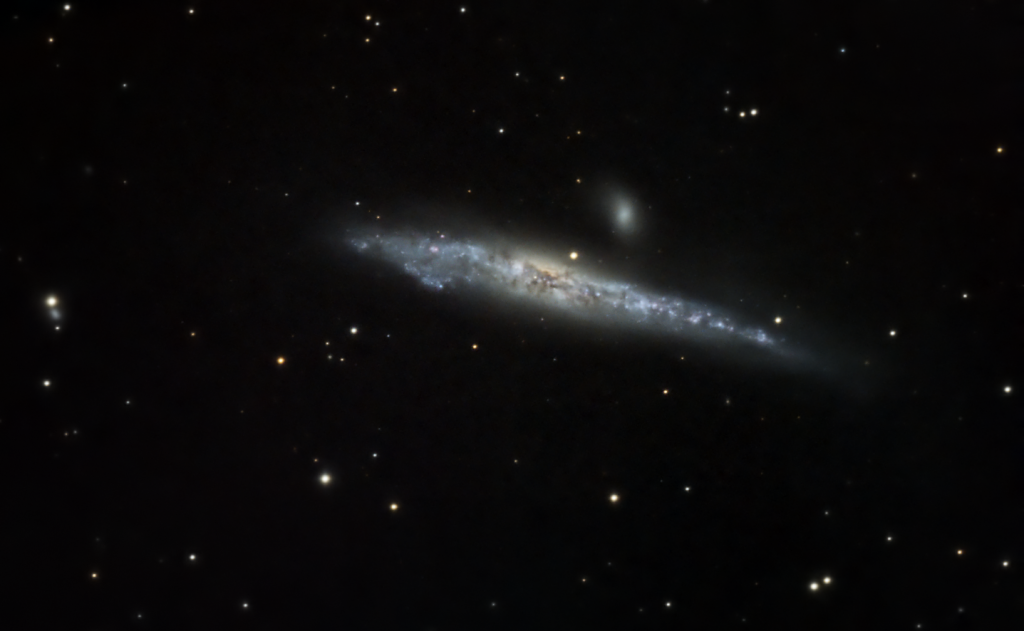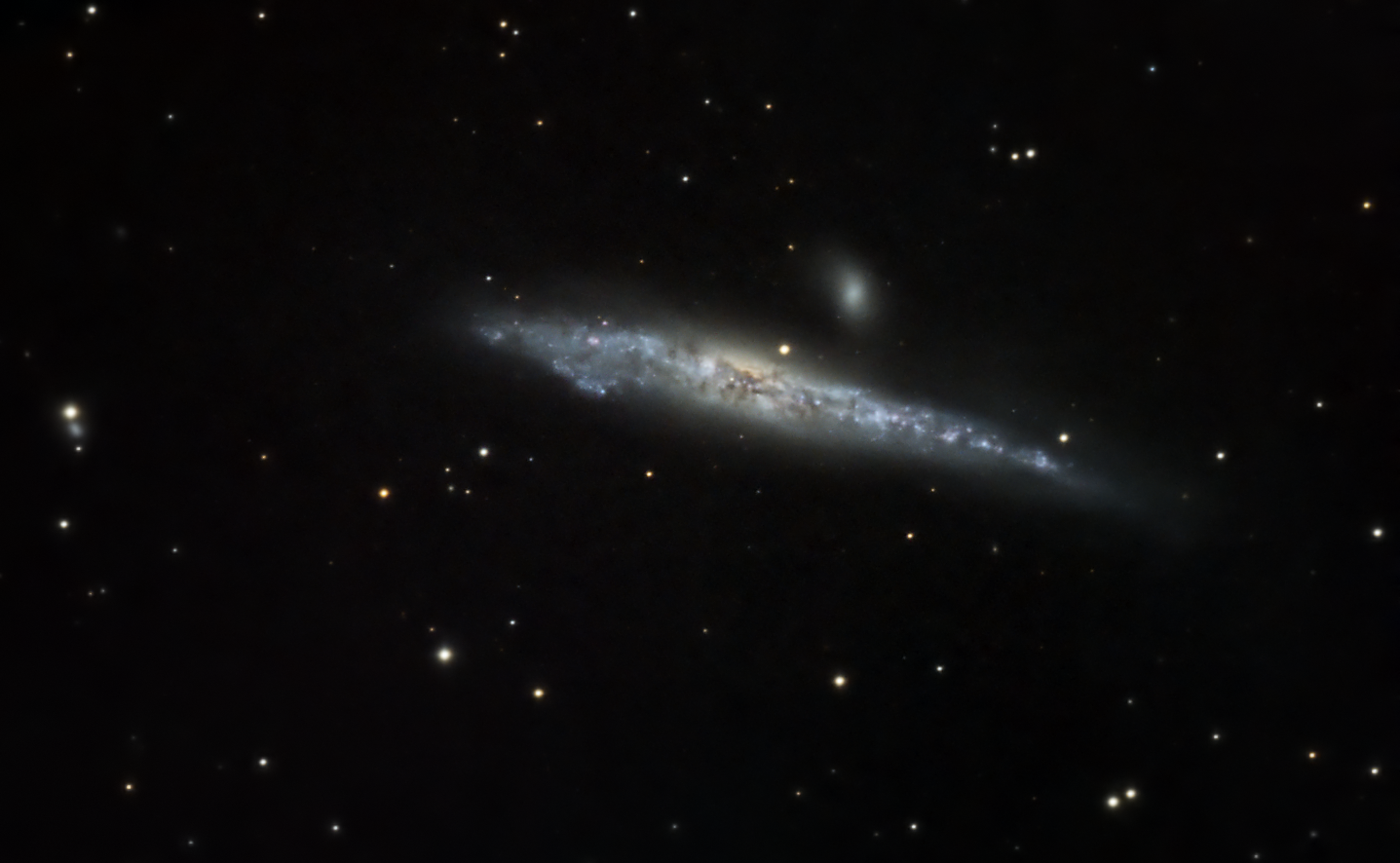
Similar Posts
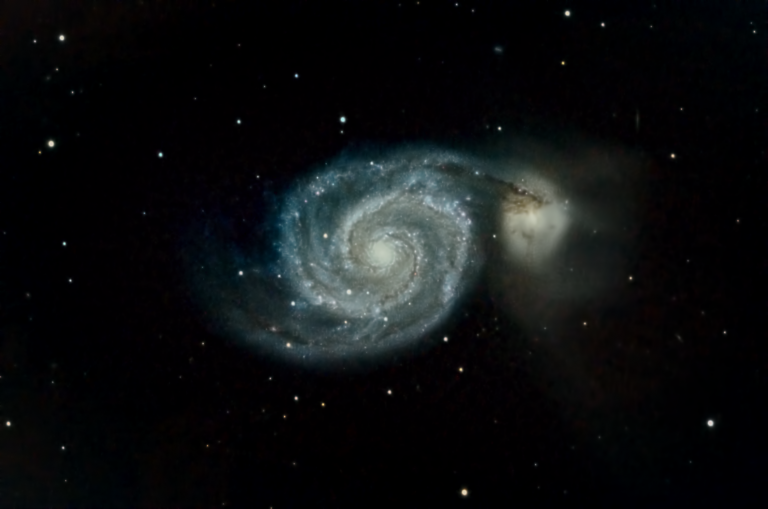
The Whirlpool Galaxy
The Whirlpool Galaxy (M51) appears to be sucking the life out of its companion, NGC 5195. While these galaxies are interacting, they’re not actually connected right now – it just looks that way.
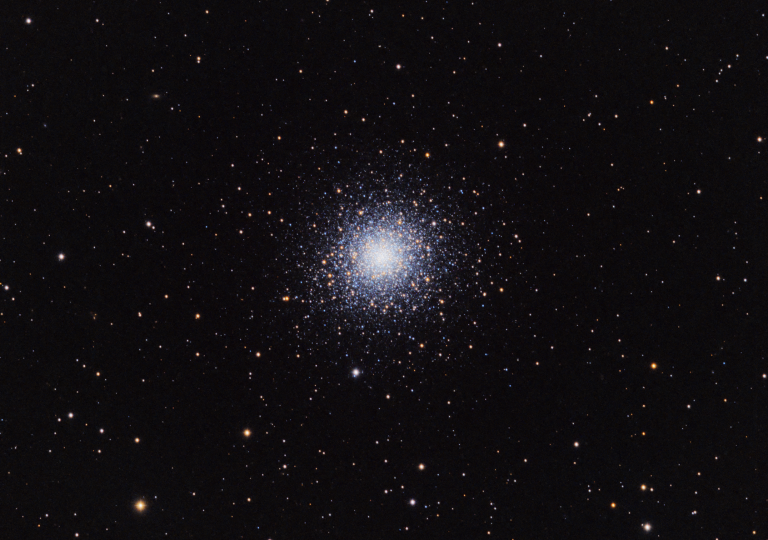
Globular cluster M92
Globular clusters are mysterious objects – they are dense clusters of stars, some containing hundreds of thousands of them. And they’re not within the plane of the Milky Way galaxy; they are scattered around it. How they formed is a bit of a mystery. Did they form with our galaxy, or are they the cores…
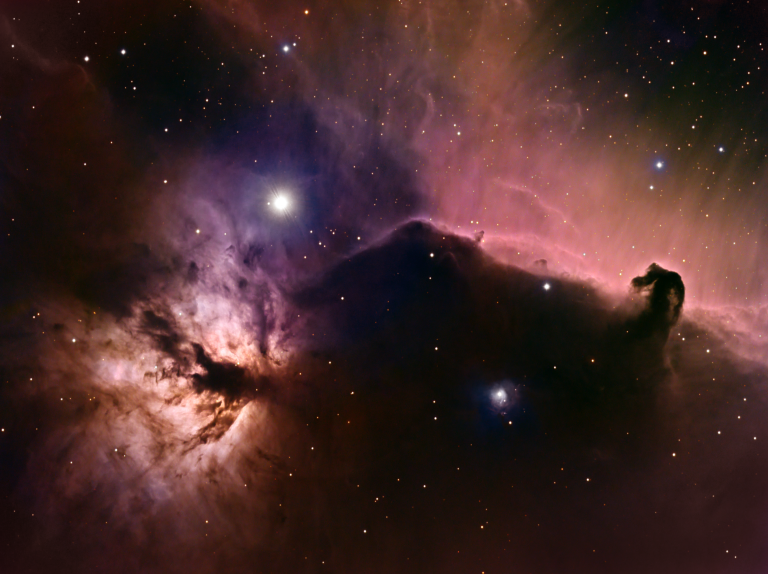
The Horsehead and the Flame
I trained my telescope at this pair of nebulas in Orion for a total of 10 hours. On the right is the iconic Horsehead nebula – actually a dark cloud of gas in front of the illuminated nebula behind it. To the left is the Flame Nebula. In between, in the upper-left, is the bright…
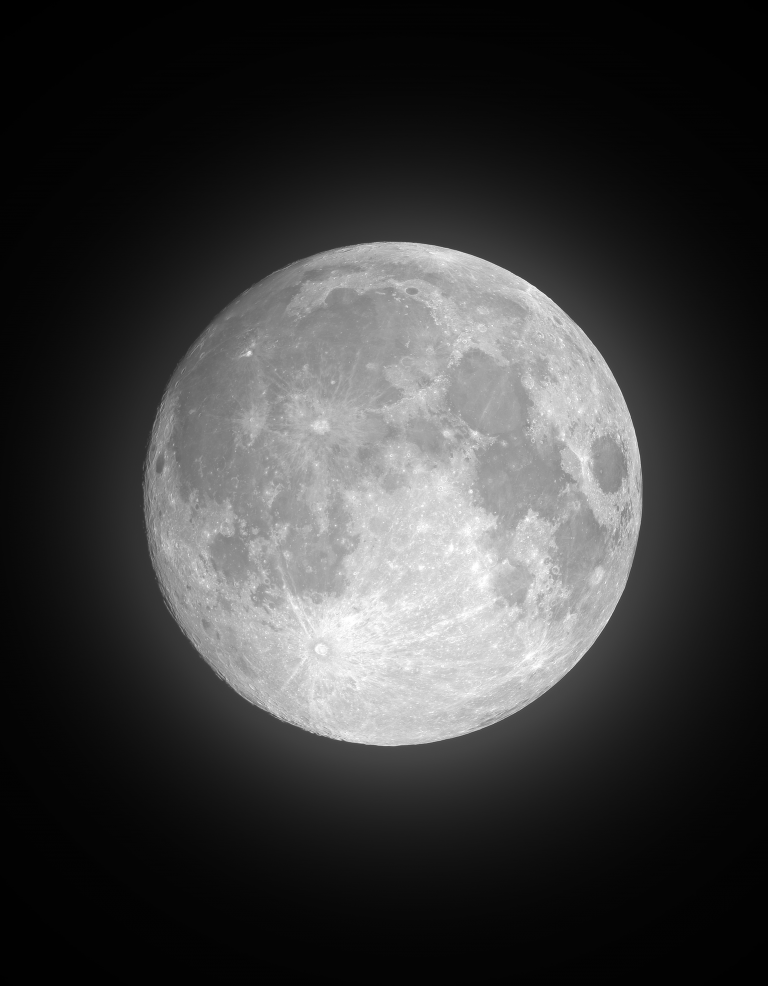
The Moon
Last night was hazy, cloudy, and with an almost-full moon that would wash out anything else I could try to image. So, I imaged the Moon itself. Tried out some new techniques; usually you would use a specialized telescope with a specialized camera and specialized software for shooting the Moon, but I wanted to see…
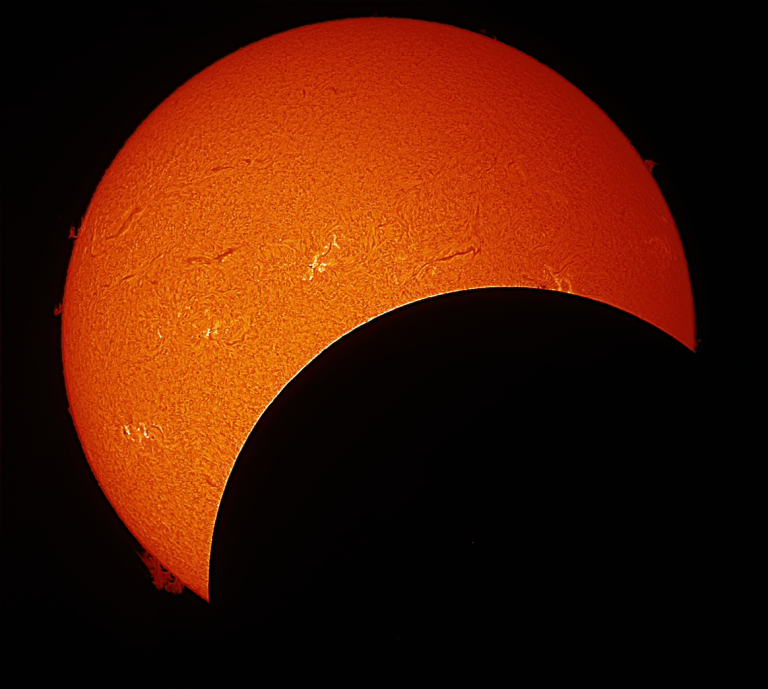
Partial solar eclipse!
Central Florida wasn’t on the path of the “ring of fire” annular eclipse, but we did get about 60% coverage during the peak of our partial solar eclipse today! I was live-streaming the view at the peak, but managed to capture a quick image for myself shortly afterwards. Lots of good flares and prominences, and…
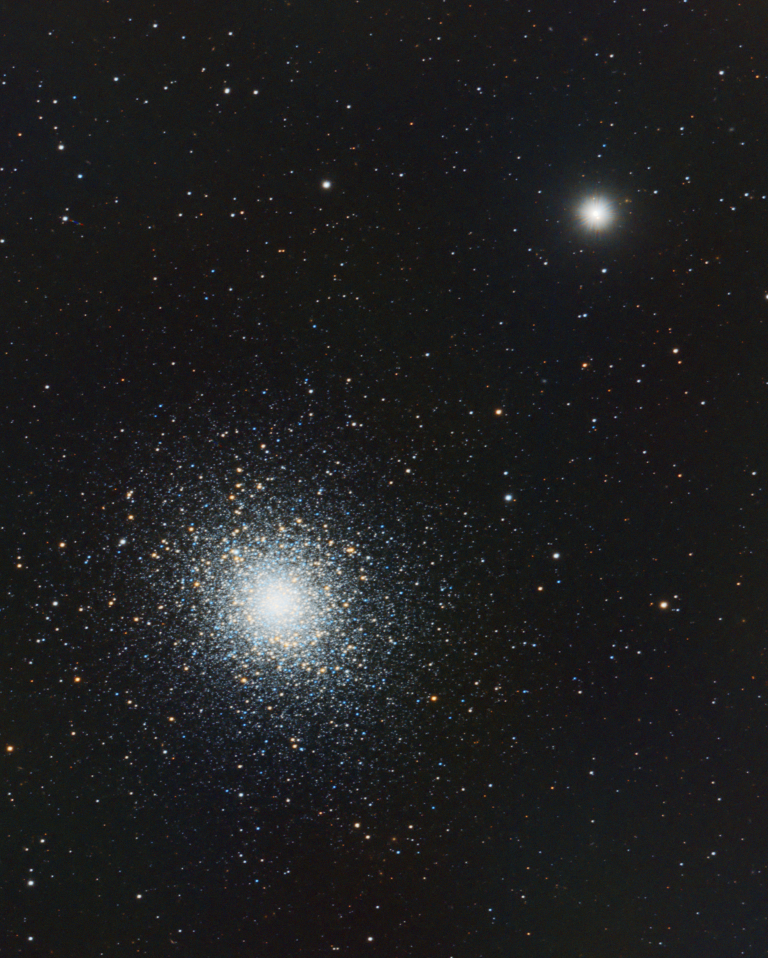
Globular Cluster M5
As we enter summer and the Earth starts pointing us back into the plane of the Milky Way and its many nebulas, we’re nearing the end of globular cluster season. M5 seems a fitting one to end on this year; there’s nothing terribly remarkable about it, other than I think it’s pretty. It’s located about…

